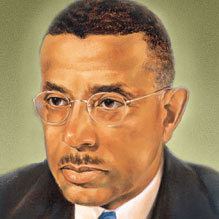Let A Fro Be A Fro
Superstar
We are deeply and profoundly sorry: For decades, The Baltimore Sun promoted policies that oppressed Black Marylanders; we are working to make amends
By Baltimore Sun Editorial Board
Baltimore Sun |
Feb 18, 2022 at 7:30 AM
We have lifted the paywall on this story. To support essential reporting, please consider becoming a subscriber.

The front page of Volume 1, Number 1. Published May 17, 1837.
Throughout its 185 years, The Baltimore Sun has served an important role in Maryland: uncovering corruption, influencing policy, informing businesses and enlightening communities. But legacies like ours are often complicated. We bore witness to many injustices across generations, and while we worked to reverse many of them, some we made worse.

Arunah S. Abell (A.S. Abell) - Founding publisher of The Baltimore Sun
The newspaper’s founder, Arunah S. Abell, is credited with bringing affordable and independent journalism to everyday citizens in Baltimore, beginning in 1837, at a time when newspapers were focused on moneyed, merchant classes and special interests. But like others in this country during that time, Abell was a Southern sympathizer who supported slavery and segregation. And this newspaper, which grew prosperous and powerful in the years leading up to the Civil War and beyond, reinforced policies and practices that treated African Americans as lesser than their white counterparts — restricting their prospects, silencing their voices, ignoring their stories and erasing their humanity.
Instead of using its platforms, which at times included both a morning and evening newspaper, to question and strike down racism, The Baltimore Sun frequently employed prejudice as a tool of the times. It fed the fear and anxiety of white readers with stereotypes and caricatures that reinforced their erroneous beliefs about Black Americans.
Through its news coverage and editorial opinions, The Sun sharpened, preserved and furthered the structural racism that still subjugates Black Marylanders in our communities today. African Americans systematically have been denied equal opportunity and access in every sector of life — including health care, employment, education, housing, personal wealth, the justice system and civic participation. They have been refused the freedom to simply be, without the weight of oppression on their backs.
For this, we are deeply ashamed and profoundly sorry.
Our contribution to this maltreatment is a dark and disgraceful component of The Sun’s past. As an institution, we’ve called on many others to recognize and rectify their own bigoted practices, past and present, particularly in these recent years of a national reckoning on race. It is our responsibility to do the same within our own walls.
We have made efforts before to bolster diversity and inclusion, but the evolution has been slow. The death of Freddie Gray while in Baltimore police custody in 2015, and the national light it shone on the persistent disparities in the city, shook us out of our complacency. And, as a movement grew across the country, as more Black Americans died at the hands of police — Alton Sterling, Philando Castile, Breonna Taylor, Anton Black, George Floyd — so did our obligation to scrutinize The Sun’s past.
And so, now we turn the spotlight on ourselves and our institution, looking at our history through a modern-day lens in an attempt to better understand our communities, the effect we have had on them, and the distrust engendered by The Sun’s actions. As part of that process, members of The Sun’s editorial board and its Diversity Committee, made up of staff volunteers, consulted the paper’s archives and several other archives online, including newspapers.com and ProQuest, which we accessed through the Baltimore County Public Library. We found appalling coverage that clearly furthered prejudice and alienated many of our readers.
Among the paper’s offenses:
- Classified ads selling enslaved people or offering rewards for their return, the first of which appeared just two months after the paper’s launch in May 1837;
- Editorials in the early 1900s seeking to disenfranchise Black voters because, as The Sun opinion writers wrote, “the exclusion of the ignorant and thriftless negro vote will make for better political conditions” and to support racial segregation in neighborhoods to preserve what Sun writers called the “dominant and superior” white race;
- A failure to hire any African American journalists before the 1950s, and too few Black journalists ever since;
- The identification of Black people by race in articles into the early 1960s, until progressive readers threatened to cancel their subscriptions if the labels weren’t removed;
- A reliance by too many of us for too long on the word of law enforcement over that of Black residents who said they were being improperly targeted by police;
- A 2002 editorial dismissal of African American lawyer Michael Steele, running mate to gubernatorial candidate Robert Ehrlich, as bringing “little to the team but the color of his skin”;
- A dearth of stories about issues relevant and important to non-white communities, and a failure to feature Black residents in stories of achievement and inspiration, rather than crime and poverty, on a level proportionate to that of their white counterparts.
It's an article too long to post, but damn is it in depth and not behind a paywall.






 white media designed to protect and run interference for the white man when he does heinous shyt...
white media designed to protect and run interference for the white man when he does heinous shyt... 
 Commendable
Commendable

 "
"